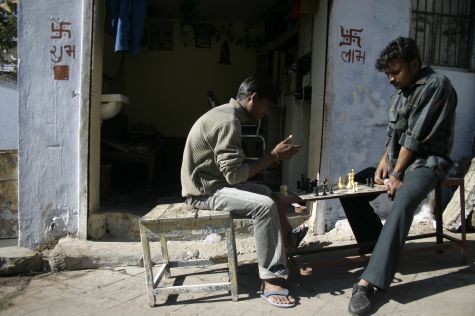Welcome to the website of a wanderjahr: my yearlong disciplined whimsy. Sponsored by the Watson Fellowship, I will be traveling to six sites around the world in search of the many nuances of lake-monster culture. Particular emphases include implications upon tourism, identity, and the changing role of mythology.
The Watson Year is underway, and I'm now in
Rotterdam, Holland as of
4 April.

Seeking a sedentary slowdown...
If you would like to receive a Lake Monster Culture update, about once a month during the project, include your email here:(Note: Buck respects your privacy, and will not sell emails to any lake-monsters.)







Are those swastikas on the walls?
Good question... I should clarify to everyone that the symbol here that resembles the infamous swastika is a symbol of Hindu nobility. It's hard to be any more specific than that; from my questionings it seems to mean something different to everyone.
However, I should assert that it has absolutely NO connection to the appropriated symbology of the Nazi party during the 1930's and 1940's. They used it as a symbol of Aryan pride. Milennia ago, the Aryans traveled to Europe but also to India, which is why you see it still as an important Hindu symbol today.
I think its also a Buddhist icon (its above vegetarian restaurants in Taiwan/China). The Nazis turned the Hindu/Chinese symbol backwards and used it as a symbol of their power. Go asian studies!
Turned backwards? Didn't they sort of rotate it 45 degrees? Doesn't it also mean something different if it's "spinning" c-clockwise or clockwise? I thought I remember reading that somewhere... I now knot.